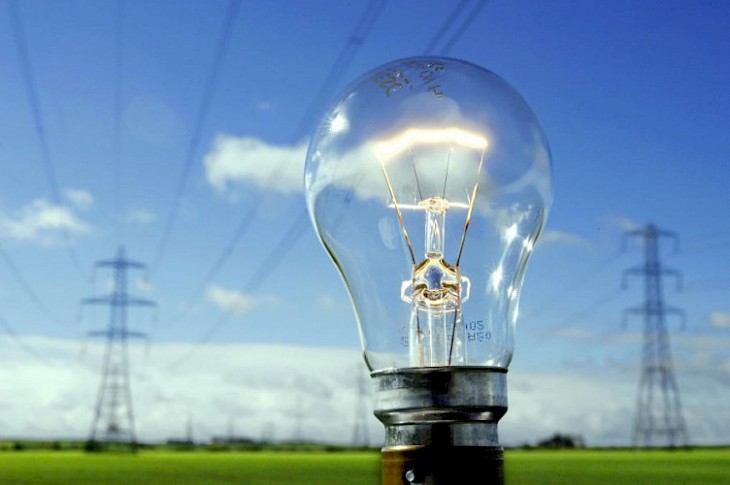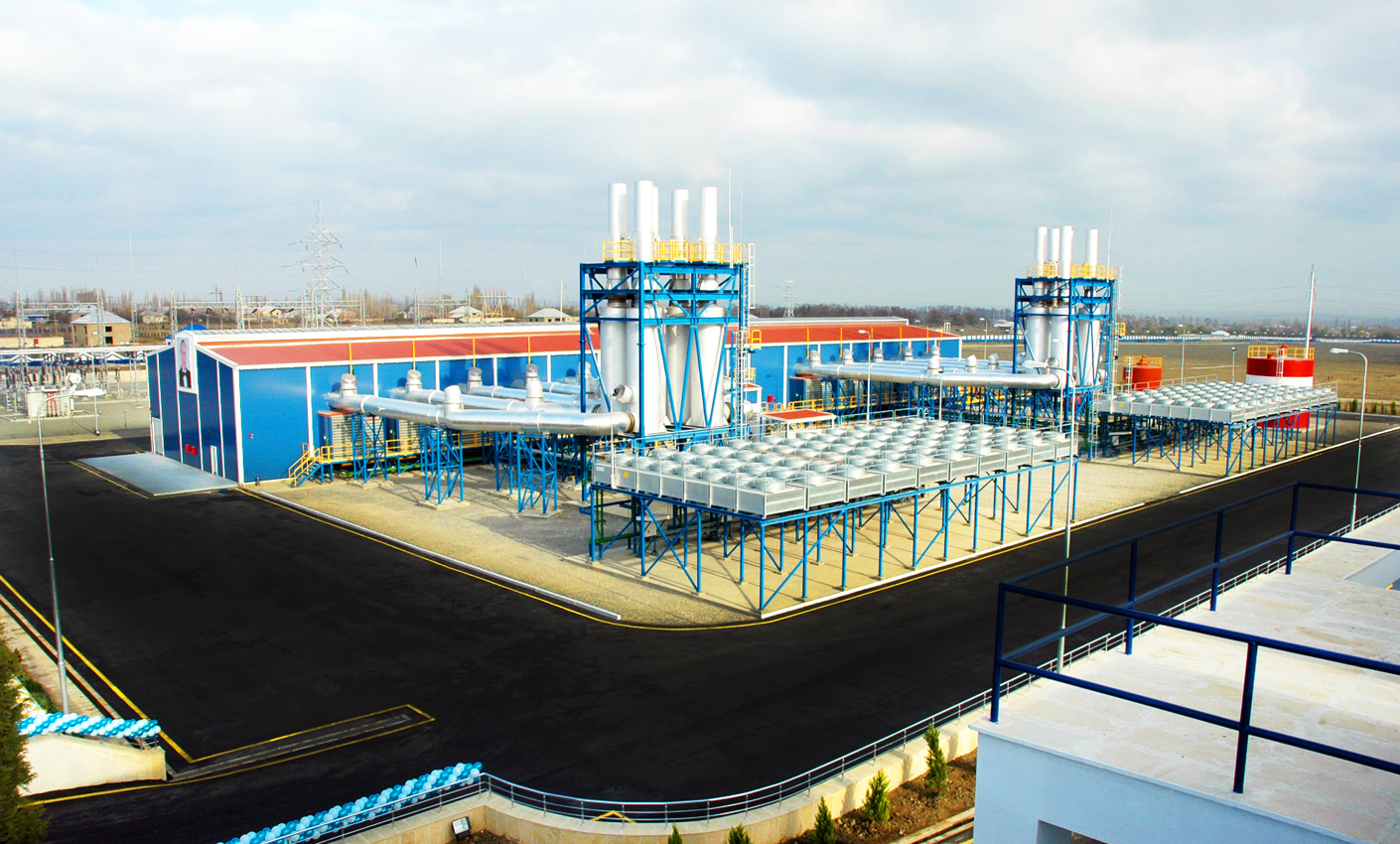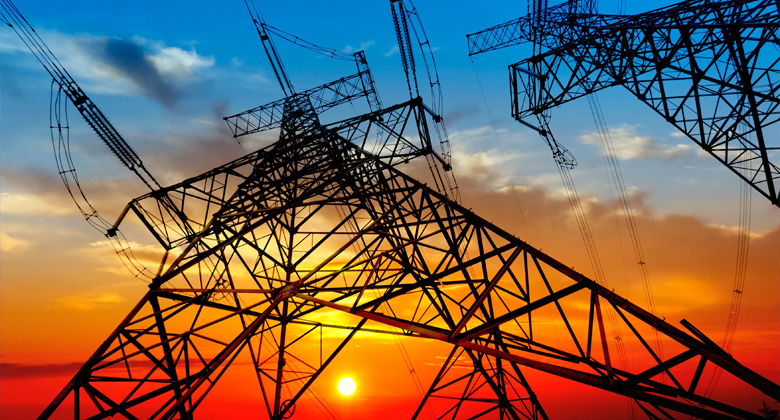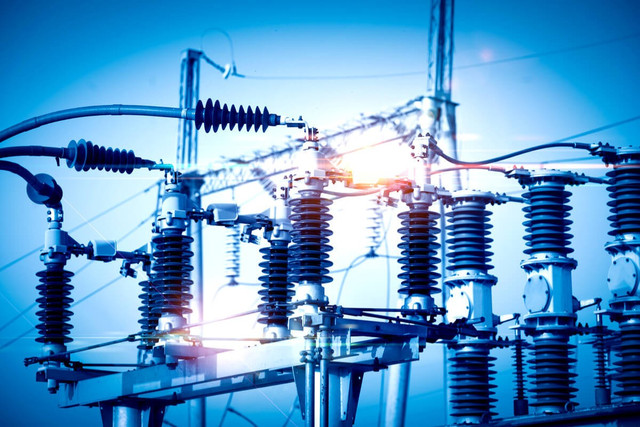- Main page
- Electric Power Engineering
Development of power engineering after gaining independence (the third stage after 1991)
The collapse of the Soviet Union affected power engineering as well. However, strategic policies directed at establishing mutually advantageous relations with the leading countries of the world allowed for attracting opportunities that have led to the increase in efficiency of Azerbaijan`s power system, the reconstruction of the electric power engineering economy and construction of new power sources up until the present day.
A new stage of development in the energy system was started with the completion of the construction of Yenikend Water Reservoir and Hydroelectric Power Station, which was the continuation of the unfinished Shamkir Hydroelectric Power Station, begun in 1984. The station were put into commission in December 2000 thanks to a loan amounting $53.2 million allocated by the European Bank for Reconstruction and Development and hard work of the republic's power engineers and builders.
Thanks to a loan from Deutsche Landesbank of Germany, two modern steam-gas turbines, each with a capacity of 53 MW, were installed and commissioned at Baku Thermal Power Plant No. 1.
Azerbaijan's national energy system has been closely linked with the energy systems of the Russian Federation, the Islamic Republic of Iran, Georgia and Türkiye. This is also one of the major factors contributing to the further development of mutual relations between the countries and maintaining peace, stability and security in the region.
Decrees of the President of the Republic of Azerbaijan, Ilham Aliyev, on the ‘State Programme for the Development of the Fuel and Energy Complex of the Republic of Azerbaijan (2005-2015)’ and ‘Additional Measures to Improve the Electricity Supply in the Republic of Azerbaijan’ played an important role in energy development.
For the first time in the CIS, commissioning modern gas turbines of type Shimal-1 with a capacity of 400 MW and the construction of power plants of eight modules with a total capacity of 872.5 MW (including Nakhchivan Autonomous Republic) in different regions of the country, the installation of systemically important power transmission lines and substations has eliminated the disproportion in power supply. The modern Sumgayit steam-gas type power plant was put into commissioned in 2009 and with a capacity of 525 MW, the Janub Power Plant in 2013, with a capacity of 780 MW. With a capacity of 400 MW, the North-2 Power Plant, which is located in Shuvalan settlement and play a significant role in improving the stability and quality of electricity supply in the Absheron peninsula, was commissioned on 5 September 2019 with the participation of the President of the Republic Mr. Ilham Aliyev. At the same time, on 11 February 2022, the Gobu Energy Hub - the 330/220/110 kV Gobu substation, with a load capacity of 1000 megawatts and the 385 MW Gobu Power Plant were put into operation with the participation of the president of the country Mr. Ilham Aliyev.
Thanks to the political will of the Supreme Commander-In-Chief Ilham Aliyev and the strength of our Army, after the liberation of our lands in 2020, large-scale restoration and construction work for the revival of these territories has begun and is being successfully continued. Just as Azerbaijan ended the Patriotic War with a historic victory in just 44 days, it demonstrates to the whole world its determination to rebuild our liberated lands in a short time and bring them into the course of development. This is evidenced by the comprehensive projects launched in the Karabakh and East Zangazur economic zones immediately after our victory.
Stations and substations in the liberated territories were rebuilt and put into operation with the participation of President Mr. Ilham Aliyev. So, on 14.02.2021, in the Gulabird village in Lachin, a small hydroelectric power plant Gulabird with a capacity of 8 MW, which was completely rendered unusable by the enemy during the Patriotic War, was put into operation after restoration. SWPP-1 with a capacity of 4.8 MW and SWPP - 2 with a capacity of 3.0 MW as the series of hydroelectric power plants Sugovushan with a total capacity of 7.8 MW was put into operation in the Sugovushan settlement of Tartar, destroyed by the enemy on 03.10.2021. Kalbajar Small Hydropower Plant on the Lev River with a capacity of 4.4 MW, destroyed and burned by the enemy, was commissioned on 26.06.2022 after reconstruction. On 27 May 2023, digital junction substations 110/35/10 kV Lachin City with a capacity of 2x40 MVA and 110/35/10 kV Gorchu with a capacity of 2x25 MVA were put into operation. On 27 May 2023, Meydan with a capacity of 3.4 MW Gamishli with a capacity of 6.3 MW, and on 25 August 2023, Soyuqbulag with a capacity of 5.3 MW, Chirag-1 with a capacity of 8.3 MW, Chirag-2 with a capacity of 3.6 MW were put into operation after reconstruction. Reconstruction of 3 small hydroelectric power plants with a total capacity of 28.5 MW (Agbulag with a capacity of 14.25 MW, Alkhasli with a capacity of 6 MW, Mishni with a capacity of 8.25 MW) has been completed in Lachin. On 25 August 2023, Alkhasli small hydroelectric power plants with a capacity of 6 MW and Mishni with a capacity of 8.25 MW were commissioned in Lachin after reconstruction. The construction of 4 small hydroelectric power plants with a total capacity of 42 MW (Shayifli, Sarigishlag, Zangilan and Jahangirbeyli with a capacity of 10.5 MW each) has been completed in Zangilan. On 28 September 2023, Jahangirbeyli SHPP was put into operation.
On 4 May, 2023, within the establishment of the first stage of the Azerbaijan-Türkiye-Europe Energy Corridor project - 330/110/10 kV Jabrayil energy junction, a Jabrayil substation with a capacity of 2x250 MVA was built and put into operation. From 24 September 2023, 110/35/10 kV Shusha substation with a capacity of 2x25 MVA and a new line with a length of 0.3 km connected to the existing 110 kV Gorus-Khankendi electric power transmission line, power supply in the direction of Khankendi has started. In addition, 110 kV substations of various capacities were built and put into operation in Fuzuli, Kalbajar, Jabrayil, Zangilan, Gubadli, Aghdam regions and Shusha.
Azerbaijan, which guarantees the safety of its electric power engineering, has been exporting electricity to neighbouring countries since 2007. Thus, the growing role of Azerbaijan in the world energy market is increasing its geopolitical influence. In November 2011, Azerbaijan signed the Memorandum of Understanding on energy cooperation between Azerbaijan and the European Union and began to adapt this field to international standards. The implementation of measures to align the legislative base with the directive and regulation of the European Parliament on the reforms to be carried out in the field of energy is one of the directions of the activity of the Ministry of Energy. In this regard, the laws of the Republic of Azerbaijan on the Efficient Use of Energy Resources and Energy Efficiency and on the Use of Renewable Energy Sources in the electricity production were adopted, as well as the Law of the Republic of Azerbaijan on Electric Power Engineering, containing modern challenges in the field of electric power, was improved and re-adopted.
The reforms carried out since 1990 in the field of electric power engineering in European countries have ensured the de-monopolization of electricity and the creation of competitive conditions in the energy market, as a result of which there have been conditions for reducing electricity prices and losses and increasing the level of Service.
Recent years have been rich in successes in increasing the stability of our electric power system and its development in a new context. With the commissioning of new power plants, the total installed capacity of our country has reached 8320.8 MW, which is 22 thermal power plants with a total capacity of 6633.0 MW, 46 hydro power plants with a total capacity of 1301.8 MW, 5 wind power plants with a total capacity of 66.5 MW, 9 solar power plants with a total capacity of 281.8, a bioenergy power plant with a capacity of 37 MW, 3 hybrid power plants with a total capacity of 0.7 MW.
The capacity of power plants on renewable energy sources, including hydropower plants, is 1687.8 MW, which is about 20.3% of the total installed capacity.
At the same time, Azerbaijan is successfully implementing and developing its energy policy in the international arena. Azerbaijan is already one of the active members of a number of international organizations, including OSCE, Eastern Partnership, Black Sea Economic Cooperation (BSEC) and GUAM.
The Republic of Azerbaijan has relations with Russia, Georgia, Iran and Türkiye among the neighbouring countries in the field of electric power engineering, and imports and exports of electricity are carried out with those countries. The electricity transmission capacity to Russia is around 350 MW and around 550 MW to Iran.
The electricity transmission capacity of the 500 kV Samukh-Gardabani Overhead Transmission Line, commissioned within the Azerbaijan-Georgia-Türkiye Energy Bridge project, is 650 MW.
Azerbaijan’s and Georgia’s energy systems are linked along the 500 kV Samukh-Gardabani Overhead Transmission Line, which also supplies Türkiye via transit through Georgia, and the 330 kV Agstafa-Gardabani Overhead Transmission Line.
Within the Azerbaijan-Georgia-Türkiye Energy Bridge project, Azerbaijan built the 500 kV Samukh-Gardabani Overhead Transmission Line. The 500/400/220 kV S/S Akhaltsikhe and 400 kV Overhead Transmission Line, connecting Georgia to Türkiye, were commissioned at the end of 2013 and completed by Georgia. Transmission of electricity through the 500 kV Samukh-Gardabani Overhead Transmission Line had started by February 2016.
According to the intergovernmental agreement "On cooperation in the field of power engineering" signed between the Republic of Azerbaijan and Georgia on 27.12.1997, the Agreement "On the parallel operation of the Georgian and Azerbaijani power systems" (05.08.1998) was signed between the power systems of the Parties. This relationship is regulated on the basis of the agreement on parallel work concluded between the parties, based on the decisions of the Joint Intergovernmental Commission on Economic Cooperation, agreements on the sale and purchase of electricity and on the transfer of electricity in case of accidents.
The energy systems of Azerbaijan and Russia have been connected through the two interstate overhead transmission lines. These are 330kV “Derbend” overhead transmission line, which connects 330/110 kV “Khachmaz” (AR) and 330/110 kV “Derbend” (RF) substations, 110kV “Yalama” overhead transmission line, which connects110/35 kV “Yalama” (AR) and 110/35 kV “Bilici” (RF).
The energy system of Azerbaijan operates in a parallel mode with the Unified Energy System of Russia in a single synchronous zone. Mutual relations between the parties are carried out in accordance with the Intergovernmental Agreement on Cooperation in the Field of Electric Power Engineering between the Republic of Azerbaijan and the Russian Federation, dated October 7, 1995.
The relationship between the energy systems of the Republic of Azerbaijan and the Russian Federation are regulated on the basis of the agreement on parallel work concluded between the parties according to the decisions of the Joint Intergovernmental Commission on Economic Cooperation, agreements on the sale and purchase of electricity and on the transfer of electricity in case of accidents.
Since December 2001, the import and export of electricity between the parties has been of a purely commercial nature. The volume of electricity exported to the Russian Federation has been growing dynamically since 2007. The energy system of Azerbaijan operates with a positive balance.
The energy exchange between the energy systems of the Republic of Azerbaijan and the Islamic Republic of Iran is carried out along five existing electric power transmission lines - the 330 kV Mugan, 230 kV Imishli and 110 kV Astara-Astara transmission lines, owned by Azerenergy OJSC, and the 132 kV Araz-Araz and 132 kV Julfa-Julfa transmission lines, owned by the State Energy Agency of Nakhchivan. The current exchange power of electricity is 600 MW.
Contract on exchange and transit of electricity signed between Azerenergy OJSC (AR) and TAVANIR (IRI) by the commissioning of 230 kV “Parsabad” TL starting from February 2001 (24.01. 2001) mainly electricity from IRI to Nakhchivan AR is carried out only as energy exchange.
There are three overhead transmission lines between the Azerbaijani and Turkish energy systems - the 154 kV Igdir-Nakhchivan No. 1, the 154 kV Igdir-Nakhchivan No. 2 and the 34.5 kV Sadarak.
The construction of 140 MW (100+40) Khudaferin and Giz Galasi HPPs on the territory of Jabrayil region, located on the Araz River, are underway. After the construction is completed, integration into the energy system will be provided through the 330 kV network to be established. The construction of hydroelectric power plants is planned to be completed within 2.5 years.
The transformation of our country from an energy-importing country to an energy-exporting country is a clear result of the economic policy pursued in the energy industry.
In accordance with the targets set by the President of the Republic of Azerbaijan, measures are underway to increase the share of renewable energy in the electricity generation to 30% by 2030. On December 29, 2020, Investment agreement, Power Purchase agreement and Transmission Connection agreement were signed on 240 MW wind power plant between the Ministry of Energy, Azerenergy OJSC and ACWA Power of the Kingdom of Saudi Arabia. On 6 April 2021, Investment agreement, Power Purchase agreement and Transmission Connection agreement were signed on 230 MW solar power plant between the Ministry of Energy, Azerenergy OJSC and Masdar of the United Arab Emirates and was commissioned on 26 October 2023.






